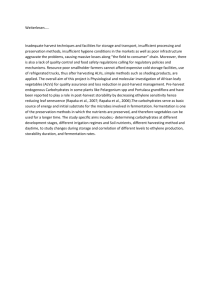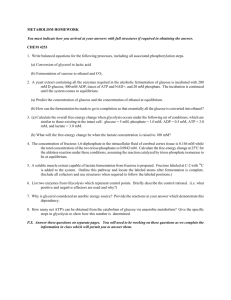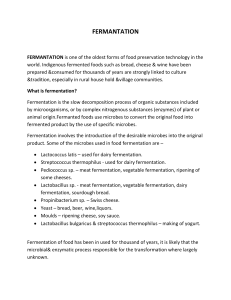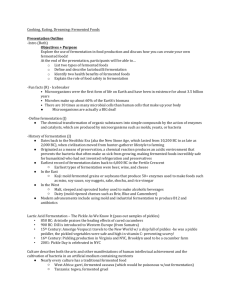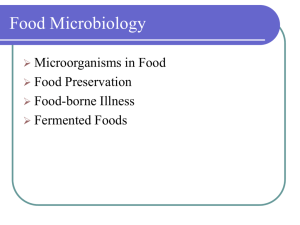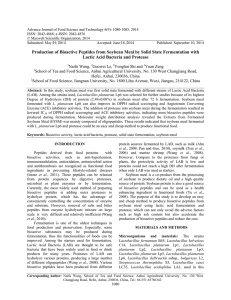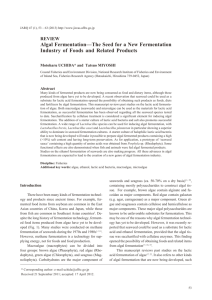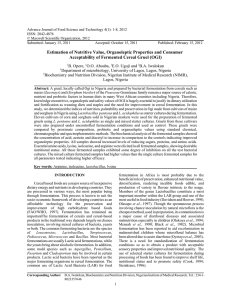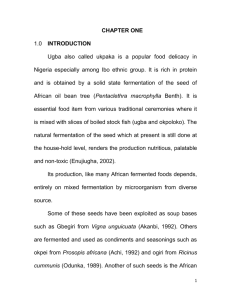In this article, the author explains in detail two types of fermentation
advertisement
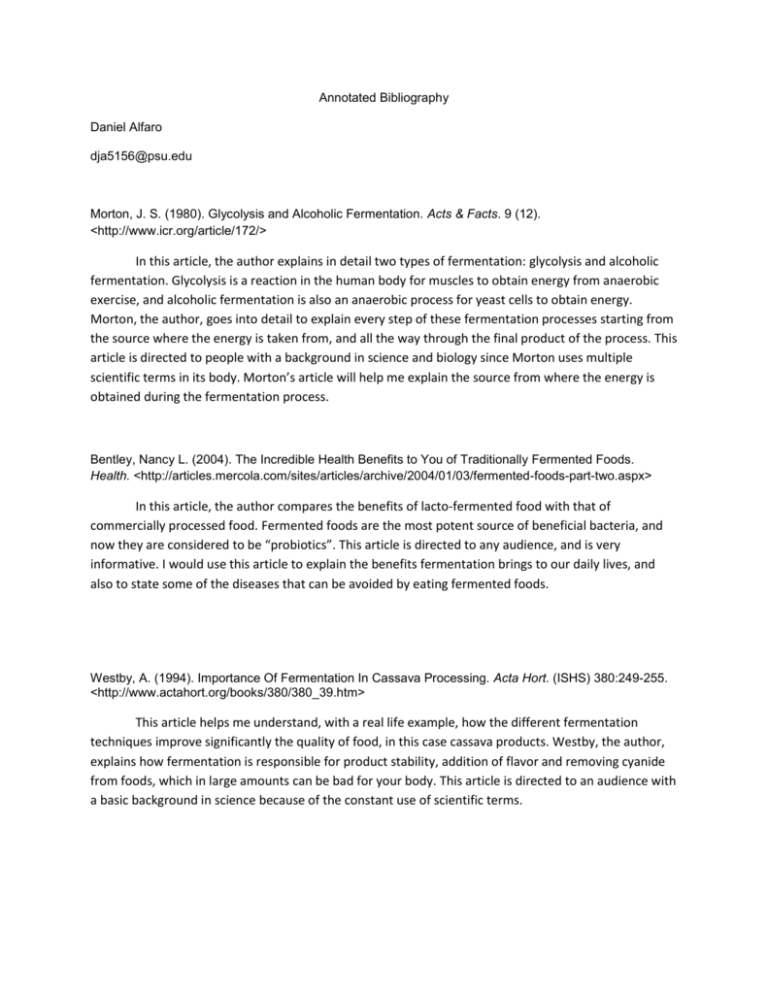
Annotated Bibliography Daniel Alfaro dja5156@psu.edu Morton, J. S. (1980). Glycolysis and Alcoholic Fermentation. Acts & Facts. 9 (12). <http://www.icr.org/article/172/> In this article, the author explains in detail two types of fermentation: glycolysis and alcoholic fermentation. Glycolysis is a reaction in the human body for muscles to obtain energy from anaerobic exercise, and alcoholic fermentation is also an anaerobic process for yeast cells to obtain energy. Morton, the author, goes into detail to explain every step of these fermentation processes starting from the source where the energy is taken from, and all the way through the final product of the process. This article is directed to people with a background in science and biology since Morton uses multiple scientific terms in its body. Morton’s article will help me explain the source from where the energy is obtained during the fermentation process. Bentley, Nancy L. (2004). The Incredible Health Benefits to You of Traditionally Fermented Foods. Health. <http://articles.mercola.com/sites/articles/archive/2004/01/03/fermented-foods-part-two.aspx> In this article, the author compares the benefits of lacto-fermented food with that of commercially processed food. Fermented foods are the most potent source of beneficial bacteria, and now they are considered to be “probiotics”. This article is directed to any audience, and is very informative. I would use this article to explain the benefits fermentation brings to our daily lives, and also to state some of the diseases that can be avoided by eating fermented foods. Westby, A. (1994). Importance Of Fermentation In Cassava Processing. Acta Hort. (ISHS) 380:249-255. <http://www.actahort.org/books/380/380_39.htm> This article helps me understand, with a real life example, how the different fermentation techniques improve significantly the quality of food, in this case cassava products. Westby, the author, explains how fermentation is responsible for product stability, addition of flavor and removing cyanide from foods, which in large amounts can be bad for your body. This article is directed to an audience with a basic background in science because of the constant use of scientific terms. Alba-Lois, L. & Segal-Kischinevzky, C. (2010) Beer & Wine Makers. Nature Education 3(9):17. <http://www.nature.com/scitable/topicpage/yeast-fermentation-and-the-making-of-beer-14372813> In this article, the authors explain the alcohol fermentation process, using wine and beer as an example. This will help my research by showing the different fields in which fermentation is used, and how it is industrialized. The two industries talked about in this article are currently high profitable, and it is all thanks to the research in fermentation and to microorganisms. “Beer & Wine Makers” is directed to any audience, but preferably with some basic background in biology. Dogra, Nitu. (2009) Role Of Microorganisms In Fermented Products. Microbiology. <http://termpaperworld.blogspot.com/2009/05/role-of-microorganisms-in-fermented.html> In this very informative article by Nitu Dogra, a microbiology student, explains in detail the role of microorganisms in fermentation. Although the reader needs a background in microbiology due to the use of scientific names and terms, this article is easy to understand. It have hundreads of examples of microbial fermented products that one could have never thought they were. This article facilitates my research by halping me use this examples to explain the different daily used products that are fermented.


